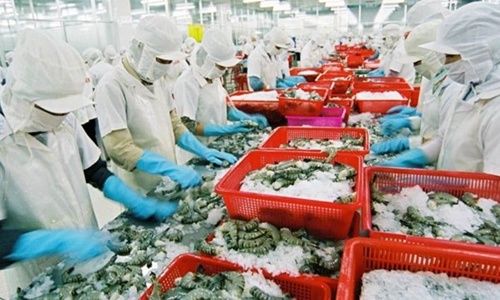Pacific deal may add 30% to GDP in decade
Pacific deal may add 30% to GDP in decade
The Trans Pacific Partnership (TPP) trade agreement is expected to add 30 per cent to Viet Nam's GDP over the next 10 years, the US Assistant Secretary of State for Economic and Business Affairs said at a press briefing held in HCM City last week.

Rivkin said US President Barack Obama and US Secretary of State John Kerry wanted to complete the TPP agreement within their office terms.
"I cannot give specific times on signing this agreement but negotiations have made positive and significant progress, and we hope it will be finished by the end of the year," he said.
The US could wrap up negotiations over the TPP agreement soon if the Congress approves Trade Promotion Authority (TPA), he said.
The US Senate recently approved the TPA with an overwhelming vote but it still must be considered by the US House of Representatives.
One of the reasons the US wants to sign the TPP was the of the Asian market, Rivkin said.
It has 550 million consumers and sales worth US$2.7 billion, six times higher than the US market.
Twenty years ago, Viet Nam-US bilateral trade was US$450 million but now stands at $40 billion.
"Let's imagine what would happen after the TPP is concluded," he said.
According to Rivkin, business opportunities in the Vietnamese market abound, but US investors want three key factors to be satisfied: transparency, predictability and legal compliance.
These factors, which are mentioned specifically in TPP, must be met with the highest standards.
If Viet Nam signs the trade pact, it would create an attractive environment for not only US investors but also other nations, Rivkin said.
"There will be a wave of investment hitting Viet Nam, and increased market access for foreign investors in Vietnam," he said.
During his first visit to Viet Nam, Rivkin met with officials of the American Chamber of Commerce in Ha Noi and HCM City.
"US businesses have invested in Viet Nam and now want to expand to take advantage of opportunities from the TPP agreement. Viet Nam also has the advantages of a young, hard-working labour force," he said.
TPP is expected to lead to significant changes in industrial sectors.
The US is Viet Nam's biggest export market, and after joining the TPP, trade barriers will fall.
The removal of trade barriers, however, will affect small- and medium-d enterprises (SMEs) in the US as well as Viet Nam, where SMEs are a critical part of the economy.
But the TPP will also create good conditions for SMEs to promote exports.
The US has over 28,000 SMEs, accounting for 98 per cent of total enterprises. However, SMEs bring export value of $19,000 billion, only 1 per cent of total turnover.
Rivkin, in his trip to Asia, visited Ha Noi, HCM City and Taipei from May 26 – June 3, where he focused on strengthening economic ties in the region.
In Viet Nam, Rivkin met with government officials, business leaders and representatives from the private sector to discuss the achievements of the last 20 years since the normalisation of US-Viet Nam relations and the way forward for the growing economic partnership between the two countries.


















